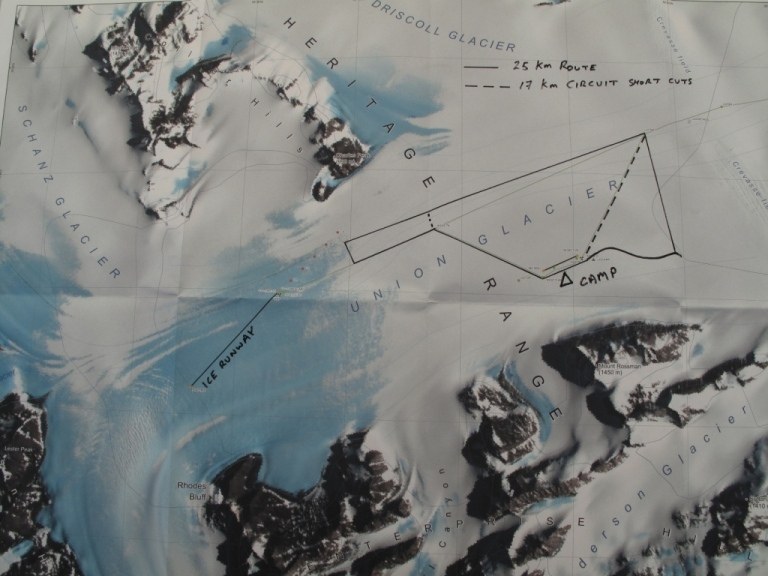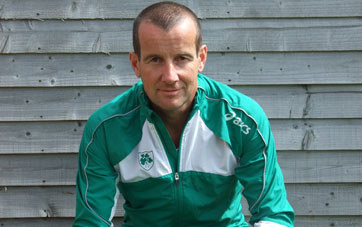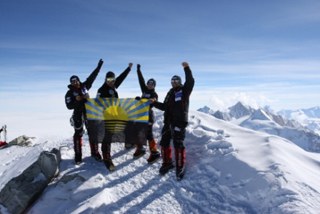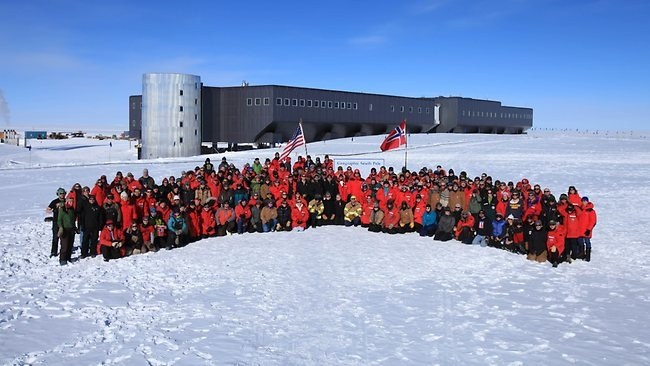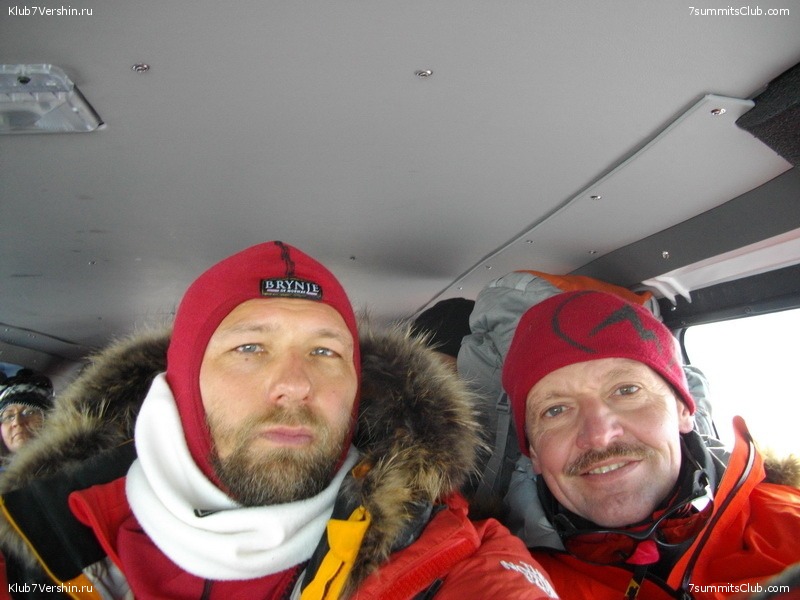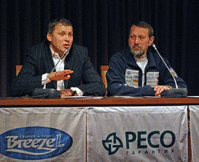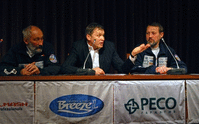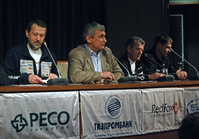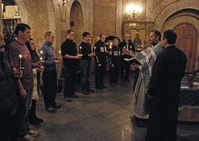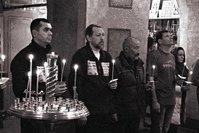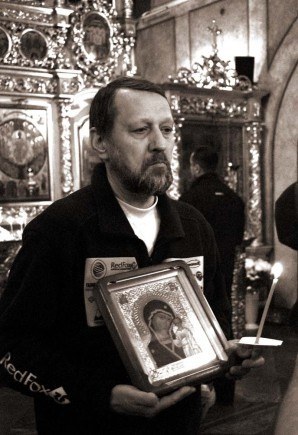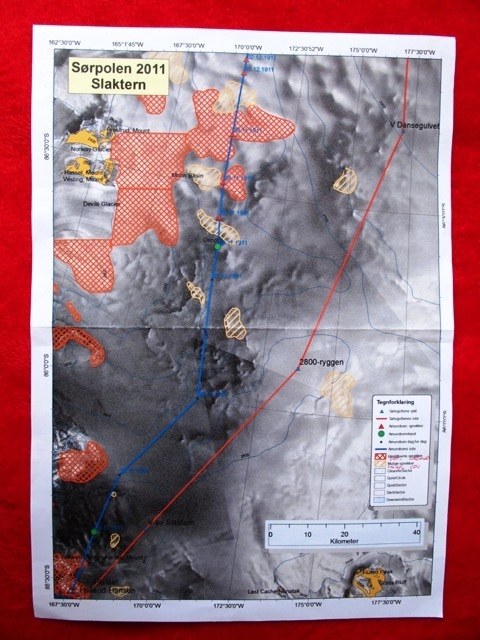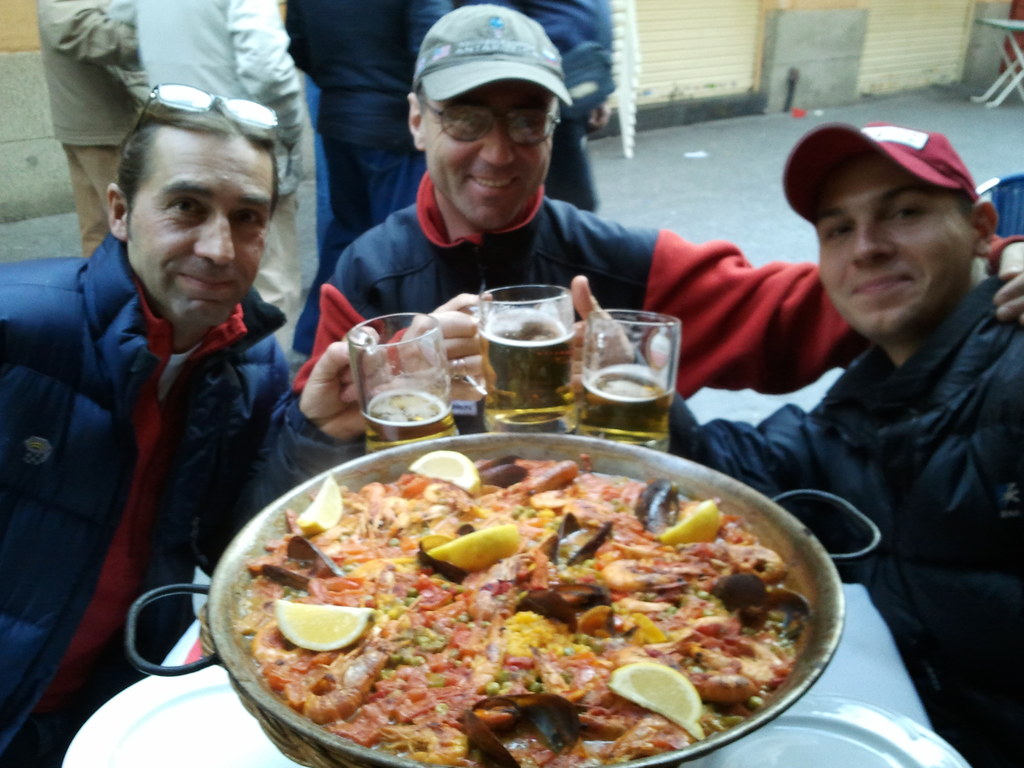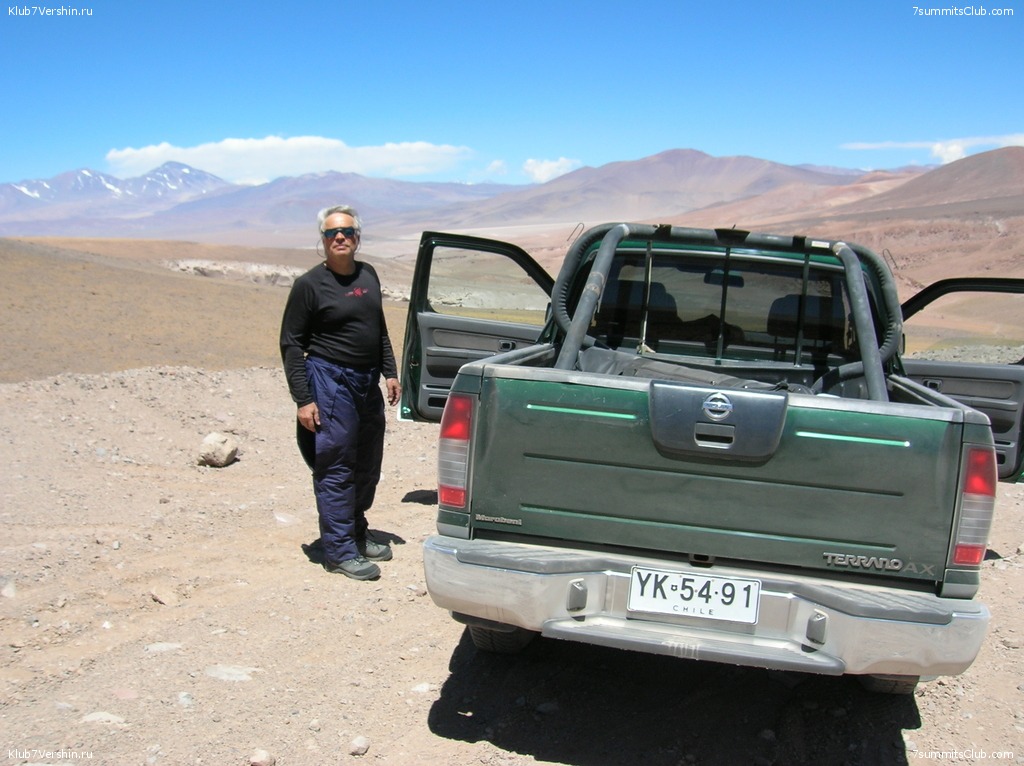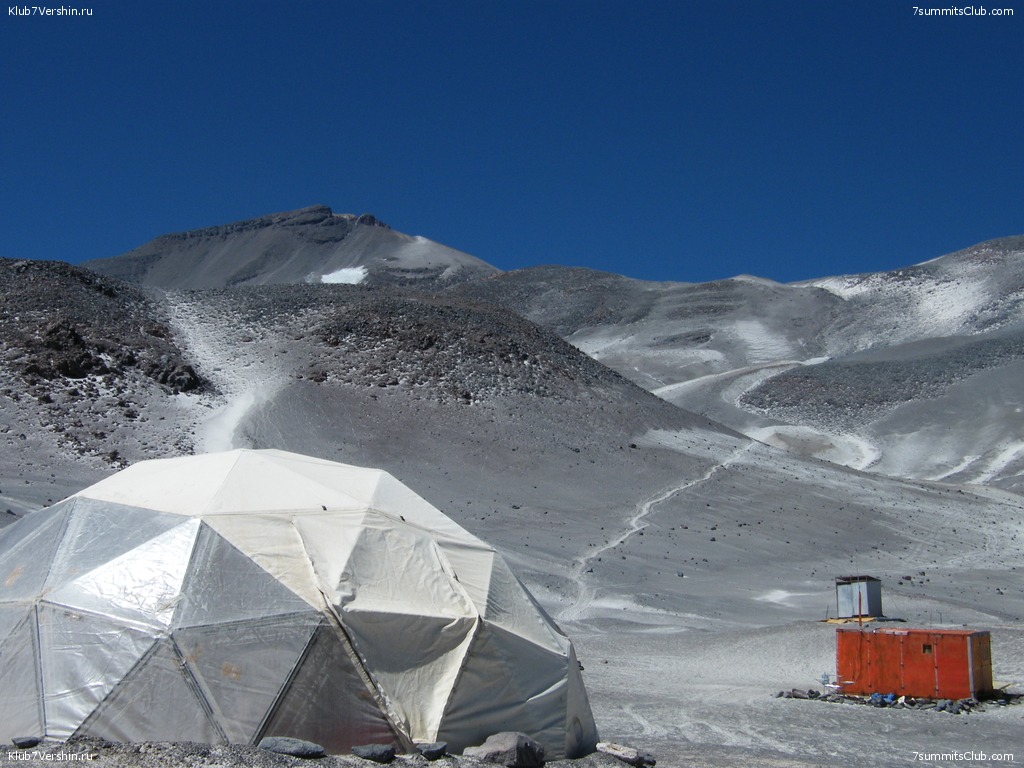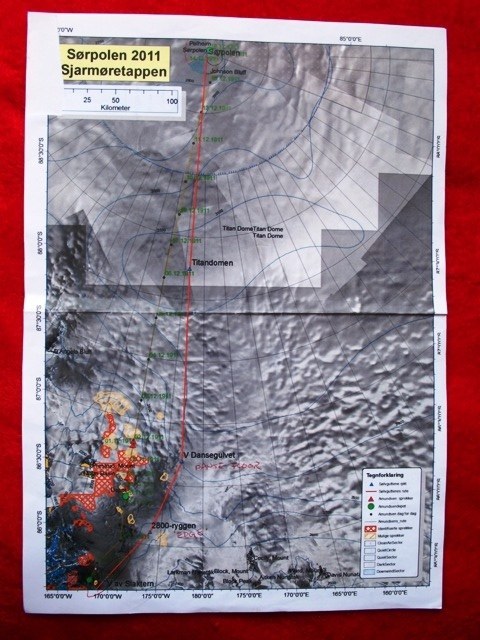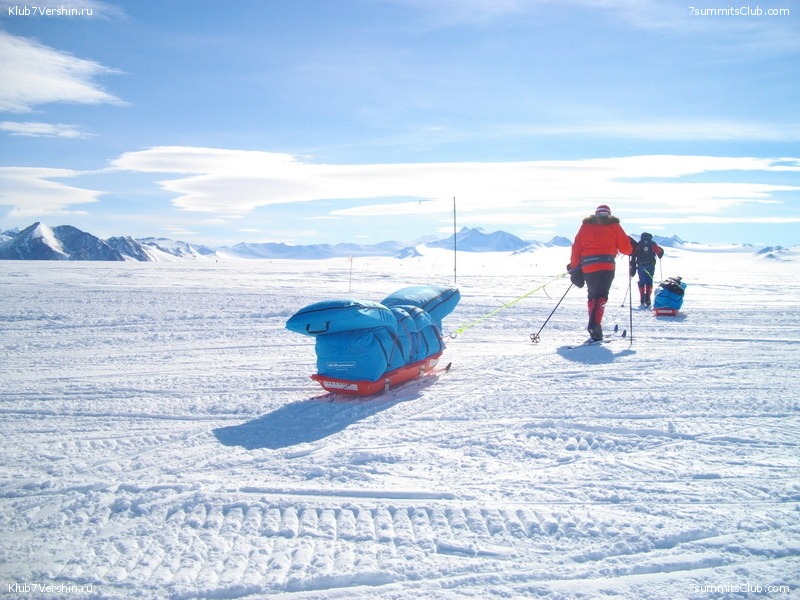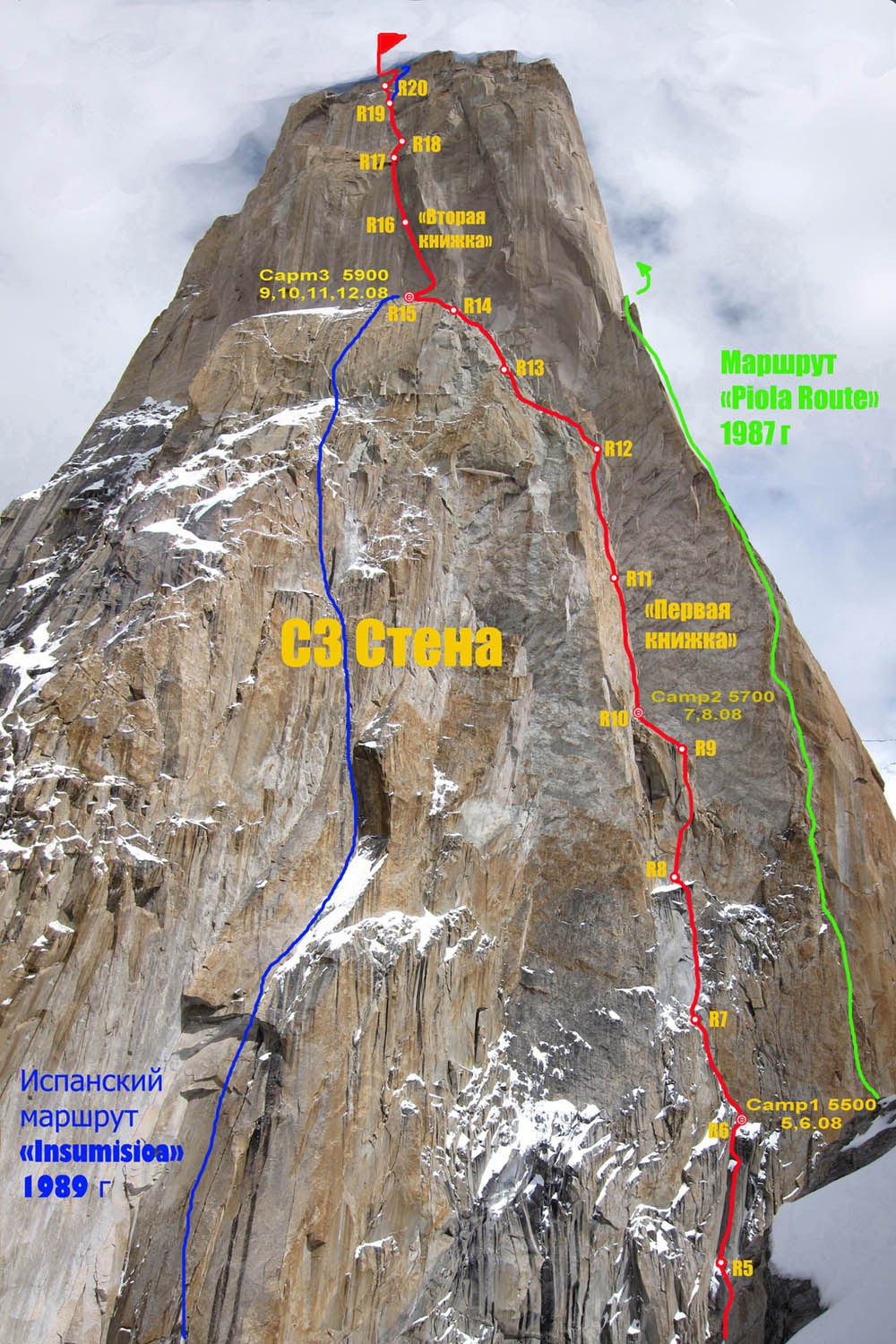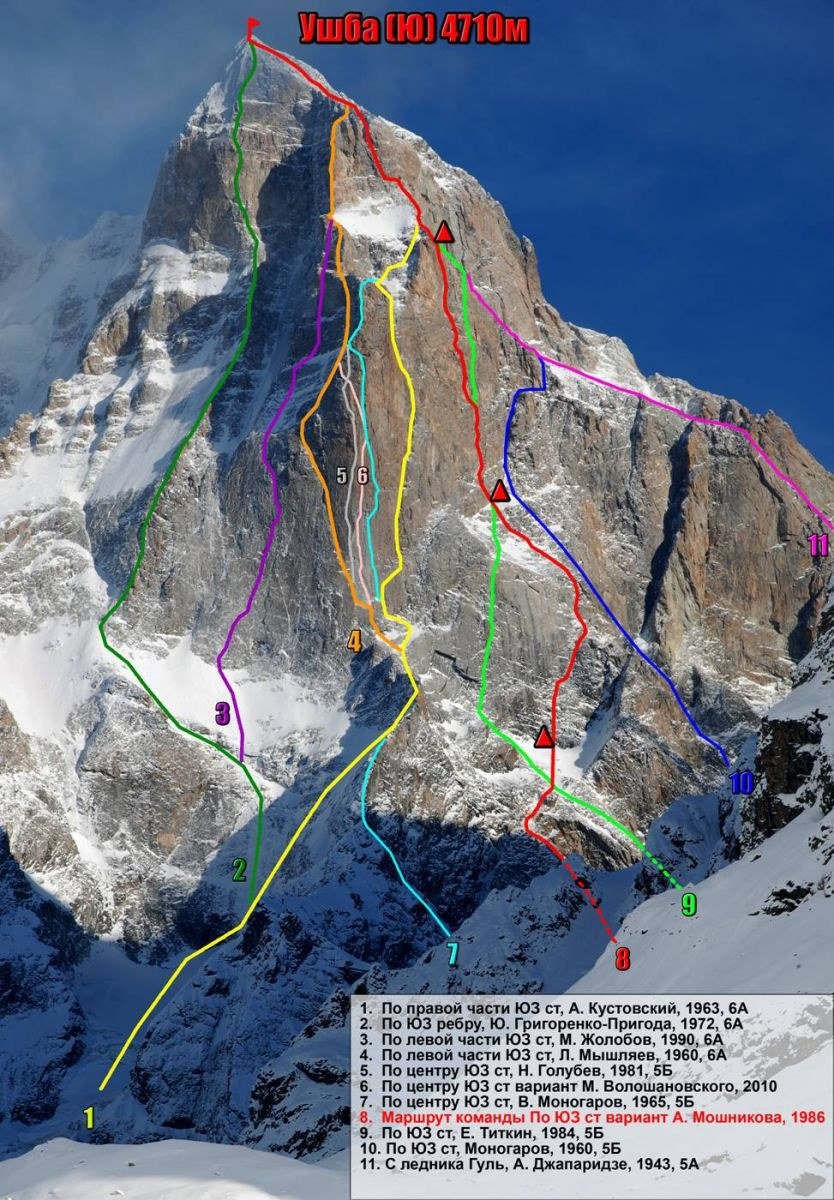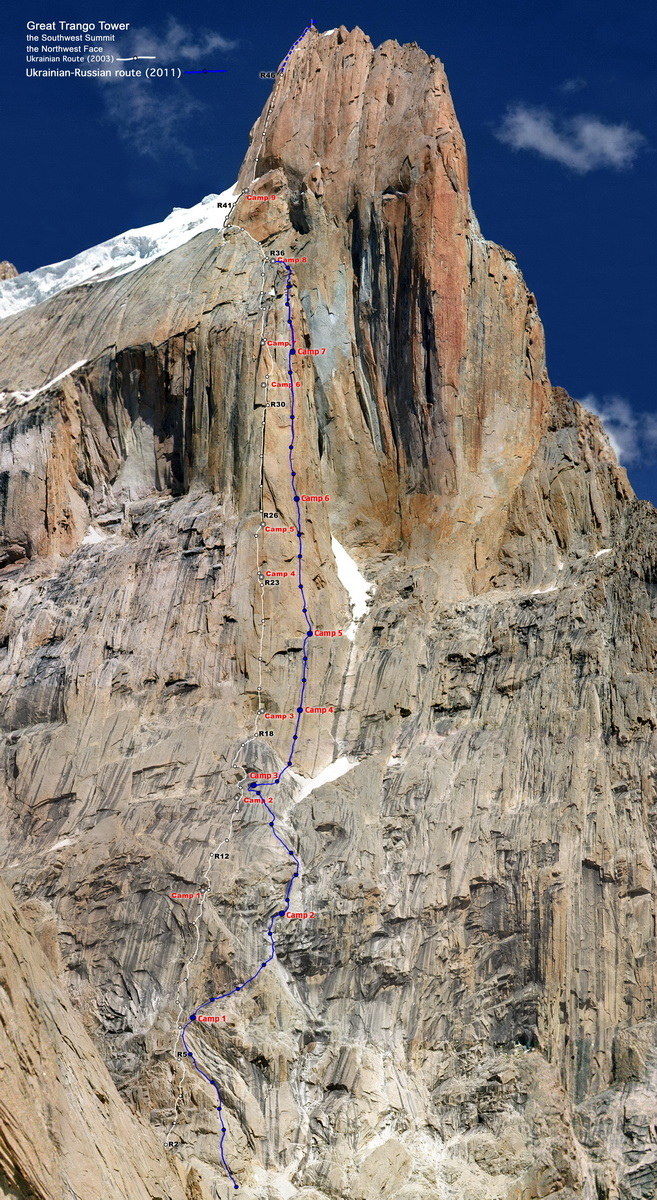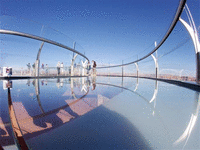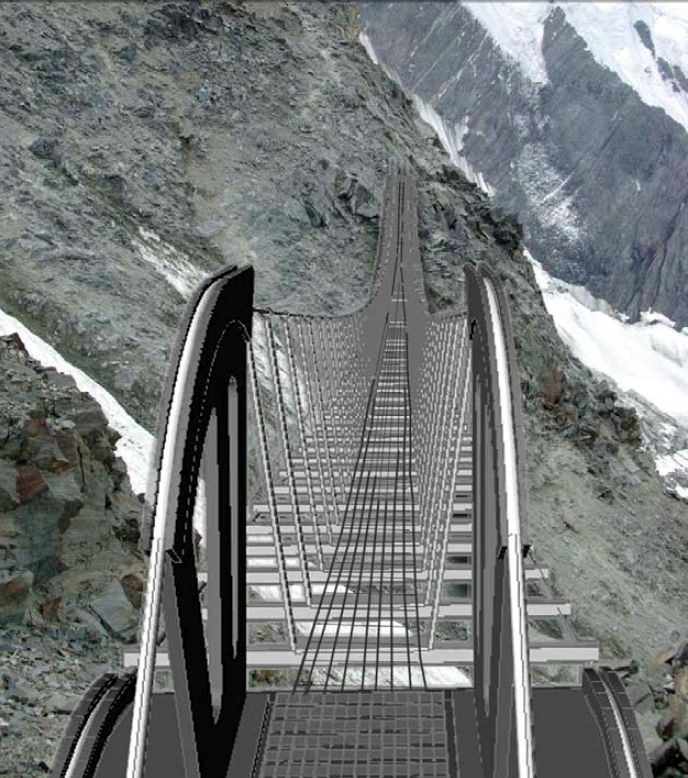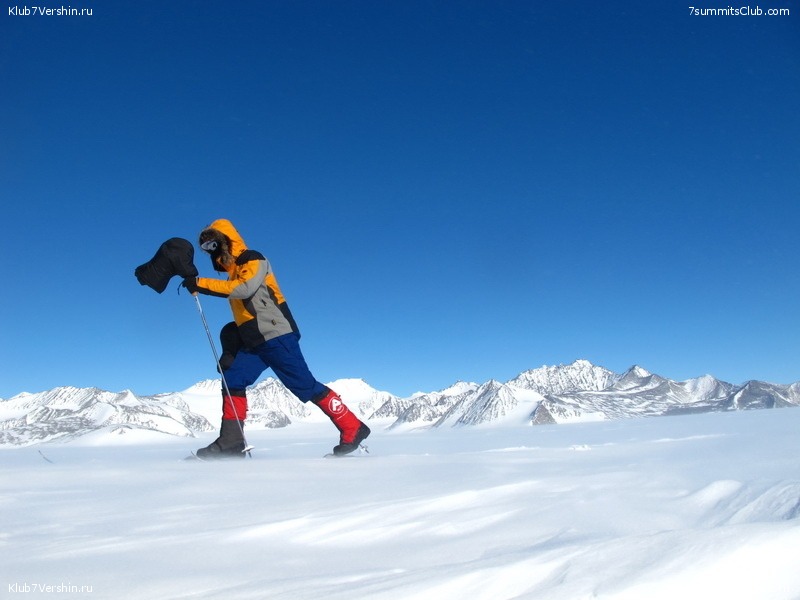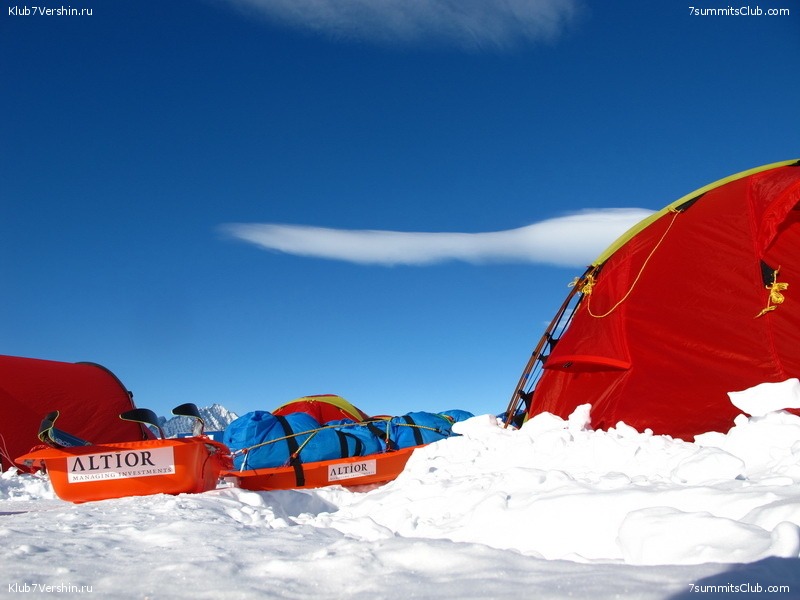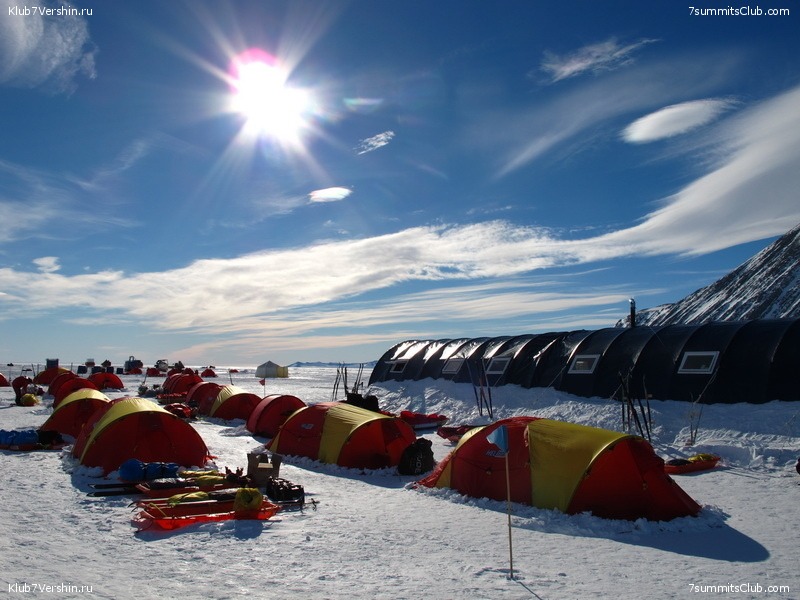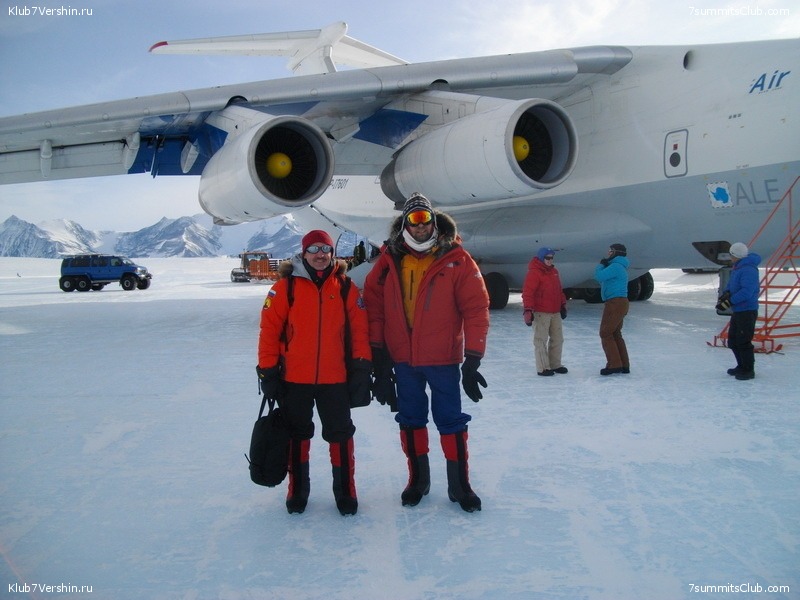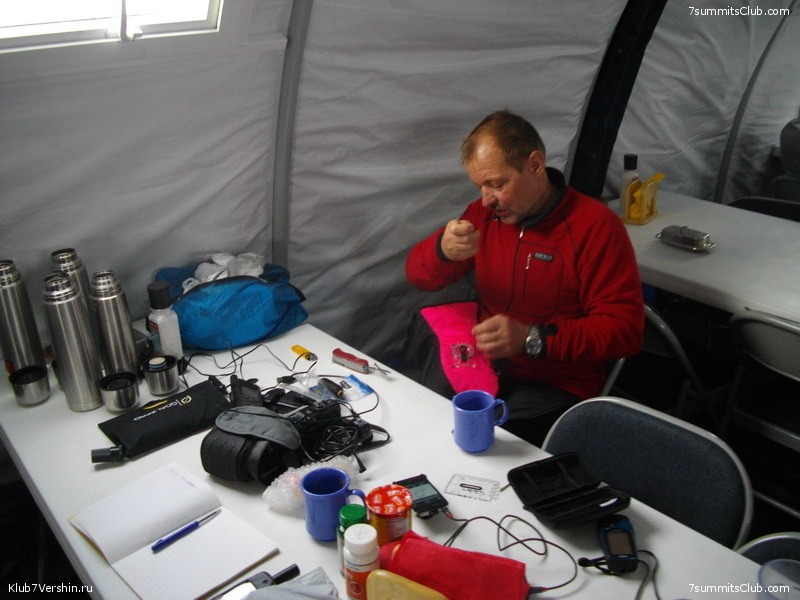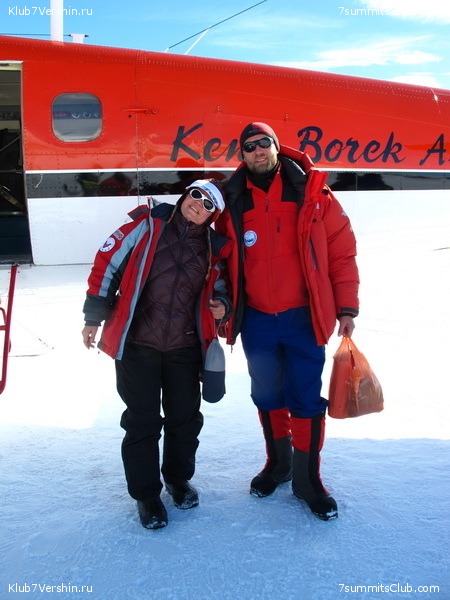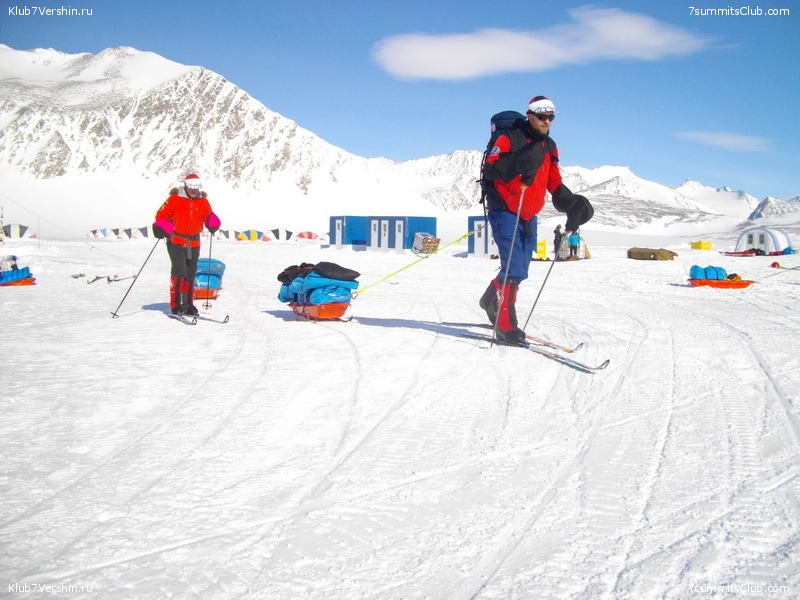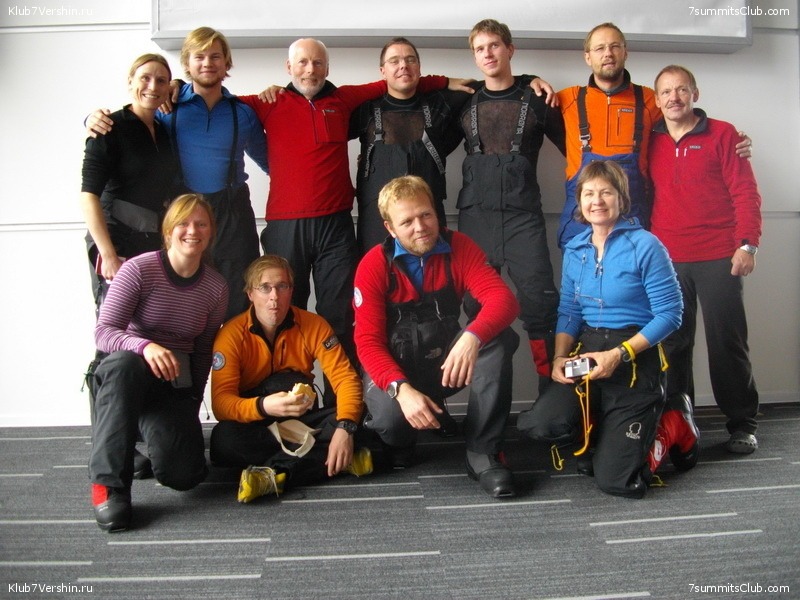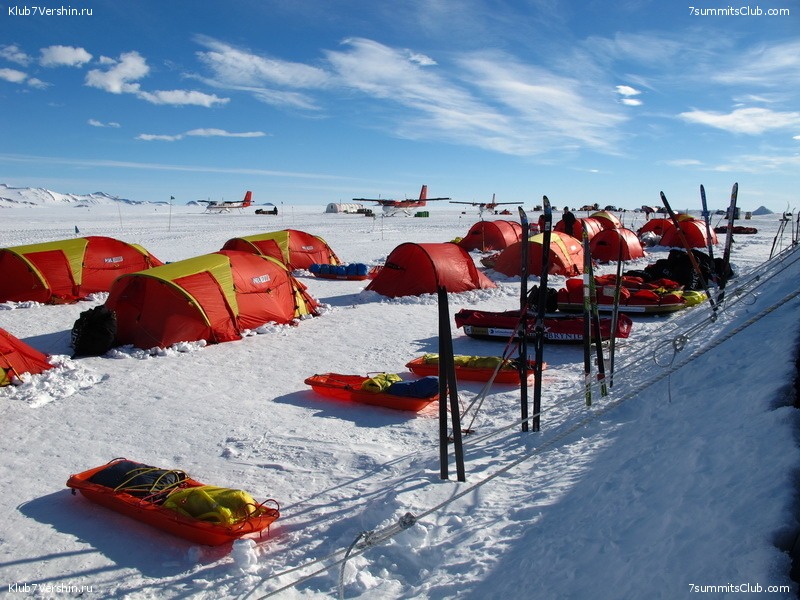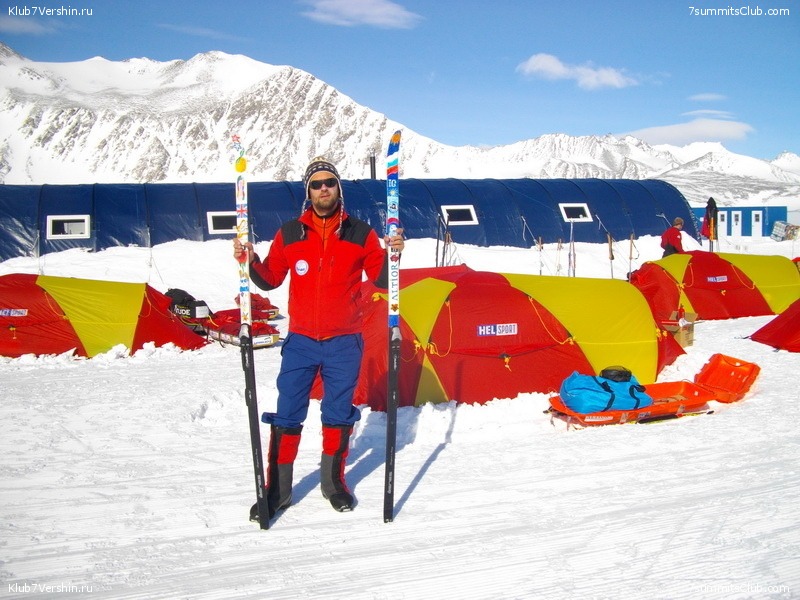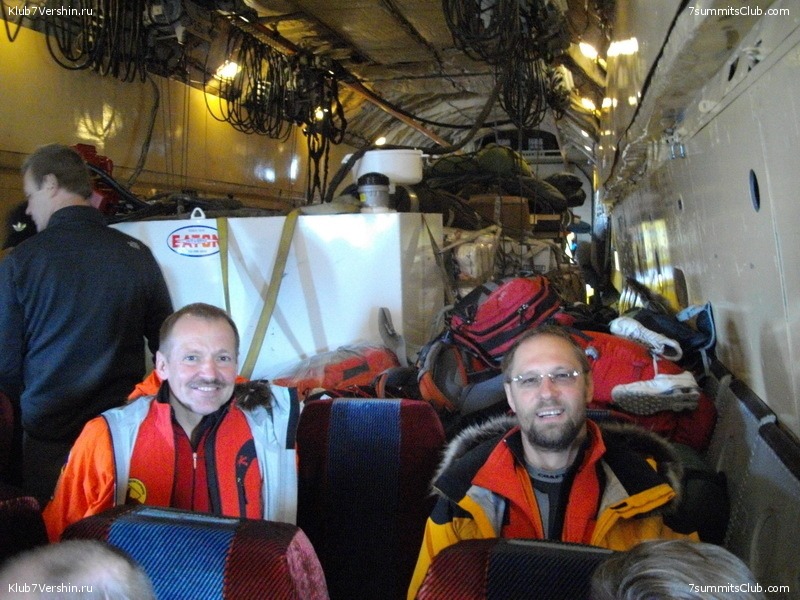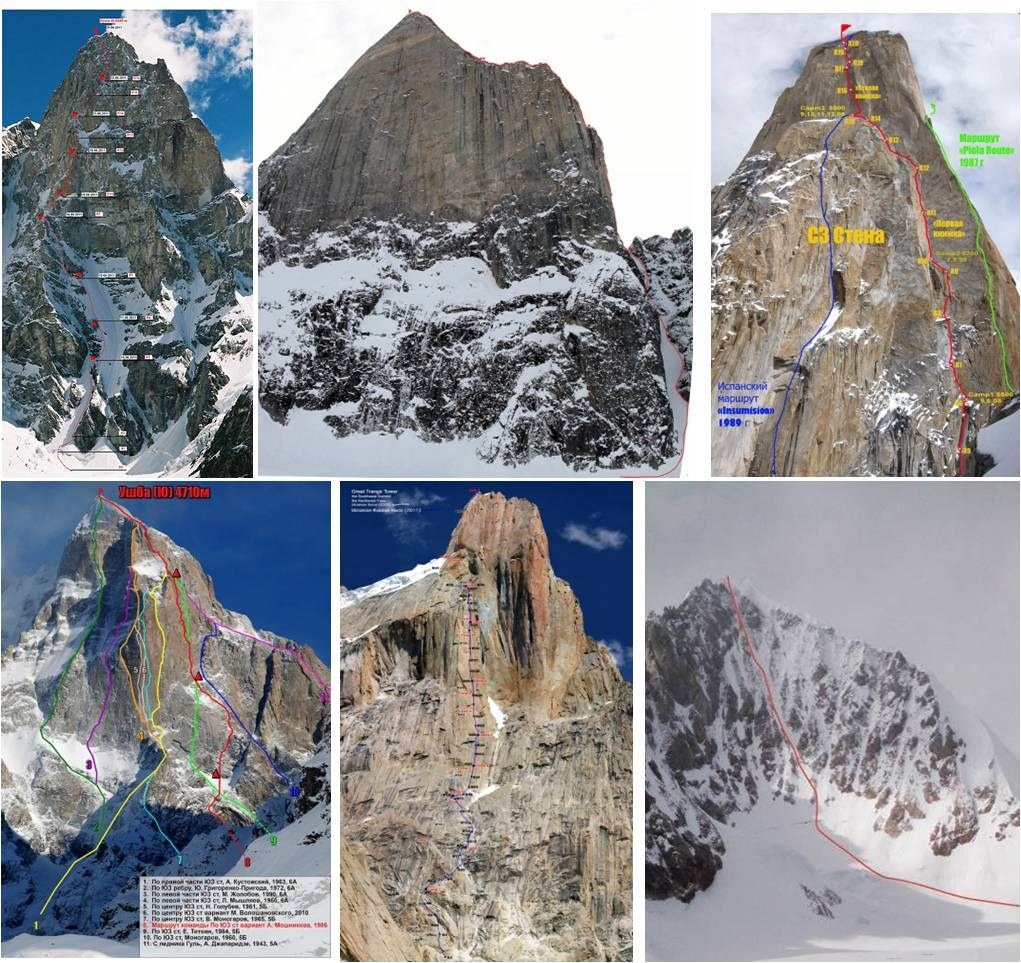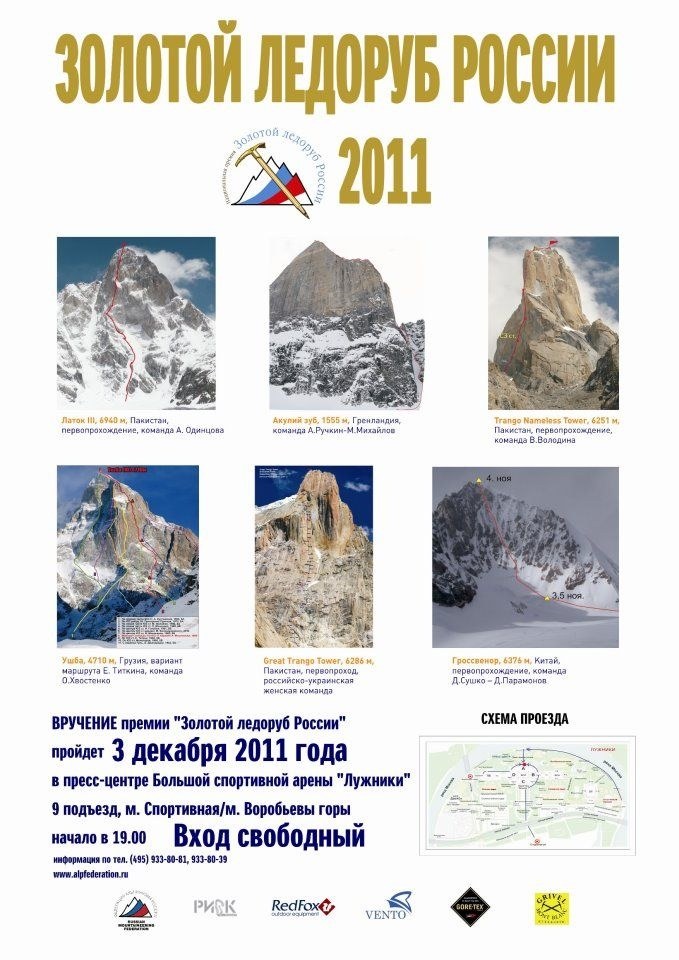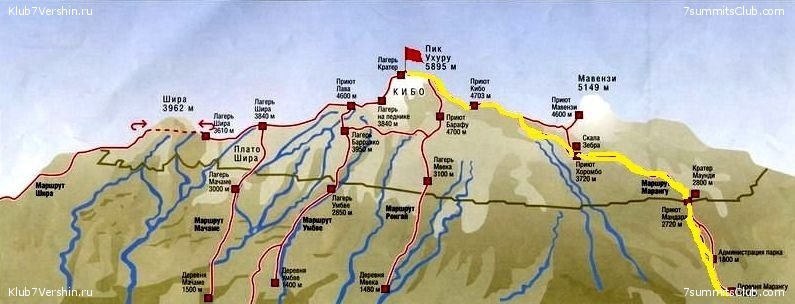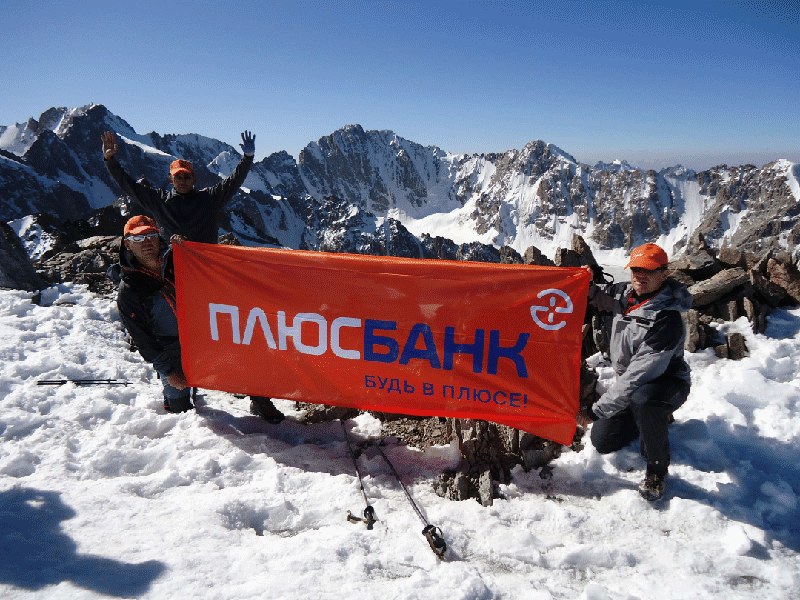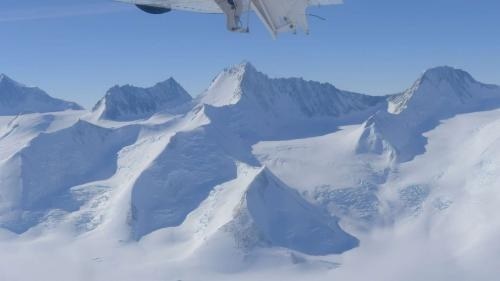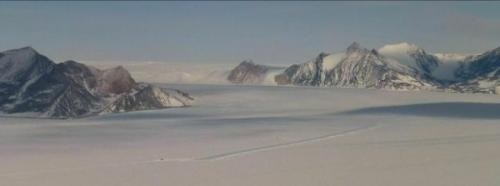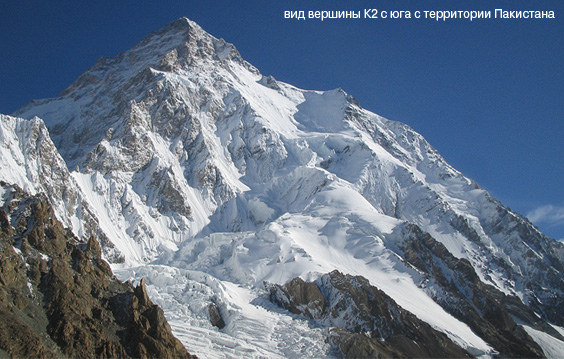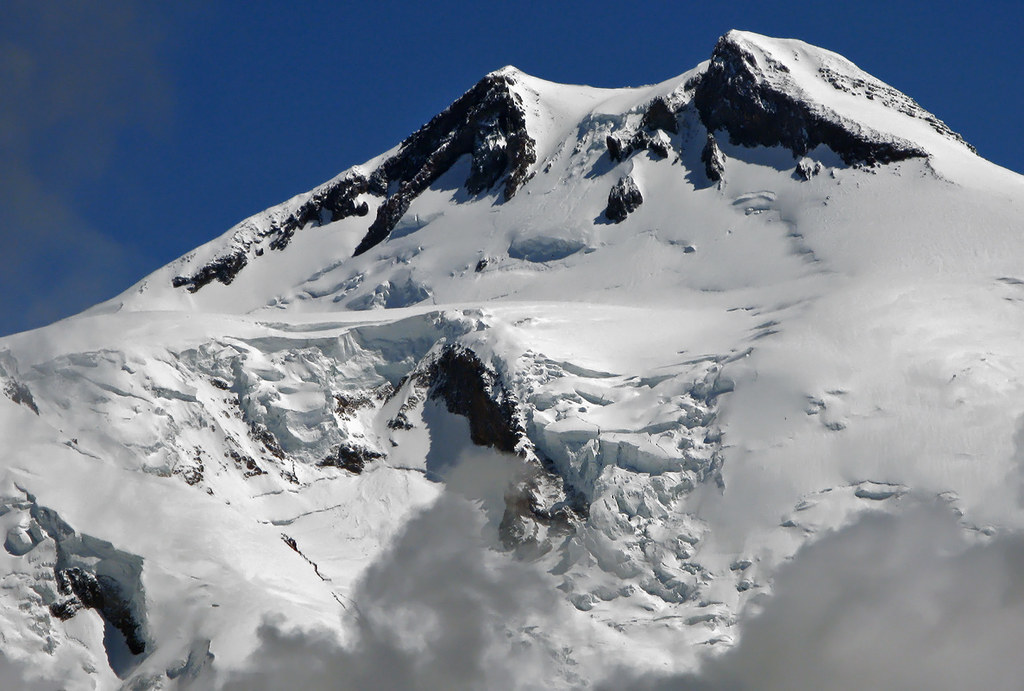All news
Antarctic Ice Marathon and World record of Richard Donovan
South Pole.
7 December 2011: Remarkable records were set across the board at the seventh running of the Antarctic Ice Marathon races, the southernmost marathon in the world, over the weekend. More than 40 competitors from 15 countries gathered on the ...
7 December 2011: Remarkable records were set across the board at the seventh running of the Antarctic Ice Marathon races, the southernmost marathon in the world, over the weekend. More than 40 competitors from 15 countries gathered on the frozen continent to take part in half,-marathon, marathon and ultramarathon races that would test the resolve of the most steely of running enthusiasts.
The events, which are held at Union Glacier camp, are the only official foot races within the Antarctic Circle on the mainland continent. This year’s event was particularly special as it coincided with the Centenary year of Man reaching the South Pole. On 1 December, Clement Thevenet (FRA) dominated the men’s marathon (42.195km) distance when running a record time of 3:47:07. In amazingly bright sunshine and temperatures of -18C, the Frenchman led from start to finish to take the title ahead of the USA’s Alvin Matthews and Matthew Von Ertfelda.
Yvonne Brown (GBR) was a worthy winner of the women’s race in 4:26:10, finishing ahead of two previous North Pole Marathon winners, Emer Dooley (IRL) and Alison Hamlett (GBR). The first three finishers broke the previous female record.
On 2 December, the Antarctic 100km began at 13:00 GMT and it took Thevenet a mere 12:09:06 hrs, another new Antarctic record, to add the title to his marathon victory. It was a colder affair with windchill temperatures dropping down to about -25C and the prolonged exposure causing two competitors , including Thevenet, requiring IV fluids after the race. Former winner, Mark de Keyser (BEL) was a very close second with Dave Deany (AUS) third.
To round off the record setting weekend, Richard Donovan (IRL) ran an epic 100 miles in a day (24:35:02 hrs) to coincide with the Centenary year celebrations. Darkness was not a problem for the Irishman as there are 24 hours of daylight in the interior of the Antarctic at this time of year.
Registration is now open for next year's Antarctic Ice Marathon & 100k trip, which is scheduled to occur from 19th - 23rd November 2012. For full details, see www.icemarathon.com.
MEN'S MARATHON
1. Clement Thevenet (FRA) - 3:47:07 hrs
2. Alvin Matthews (USA) - 4:38:19 hrs
3. Matthew Von Ertfelda (USA) - 4:52:58 hrs
4. Simon Abrahams (GBR) - 4:56:49 hrs
4. Joey McBreary (USA) - 4:56:49 hrs
6. Krzysztof Szachna (POL) - 5:02:50 hrs
7. Dave Kennedy (USA) - 5:06:42 hrs
8. Errol Damelin (GBR) - 5:14:30 hrs
9. Taco Jongman (NED) - 5:23:00 hrs
10. Doug Carrell (USA) - 5:44:26 hrs
11. Christopher Duff (USA) - 5:53:58 hrs
12. Rusty Berther (AUS) - 6:02:12 hrs
13. Ray Miller (USA) - 6:16:29 hrs
14. Riet Van de Velde (BEL) - 6:28:31 hrs
15. Ladislav Simek (CZE) - 6:29:52 hrs
16. Michael Parrott (CAN) - 6:39:06 hrs
17. Michael Bartl (GER) - 6:51:46 hrs
18. Jeremy Cashen (NZL) - 7:28:10
19. Tom Cashen (NZL) - 7:28:11 hrs
20. Mark Kooijman (PHI) - 7:31:18 hrs
21. Don Kern (USA) - 7:53:38 hrs
22. Sebastian Armenault (ARG) - 8:09:41 hrs
23. Anand Anantharaman (IND) - 8:45:40 hrs
* George Nichols (USA) ran a marathon on 2 December in 8:30:12 hrs
WOMEN'S MARATHON
1. Yvonne Brown (GBR) - 4:26:10 hrs
2. Emer Dooley (IRL) - 4:41:30 hrs
3. Alison Hamlett (GBR)- 4:46:39
4. Elizabeth Chapman (GBR) - 5:43:57 hrs
5. Sarah Ames (GER)- 6:35:58
6. Mala Honnatti (IND)- 7:11:26
7. Sophie Woo (NED) - 7:31:18 hrs
8. Rebecca Frechette (USA)- 8:43:50
9. Linh Huynh (CAN)- 8:44:53
* Bonnie Bailey (USA) ran a marathon on 2 December in 8:30:12 hrs
ANTARCTIC 100 KM
1. Clement Thevenet (FRA) - 12:09:06 hrs
2. Marc de Keyser (BEL) - 12:14:18 hrs
3. Dave Deany (AUS) - 13:48:14 hrs
4. Brent Weigner (USA) - 15:41:04 hrs
5. Matthew Von Ertfelda (USA) - 20:03:42 hrs
100 MILE POLAR CENTENARY RUN
1. Richard Donovan (IRL) - 24:35:02 hrs
WHITE CONTINENT HALF-MARATHON
1. Chad Bruce (CAN) - 2:30.32 hrs
2. Matt Kirby (GBR) - 3:01:01 hrs
*******
Richard Donovan, 42, from Galway in the west of Ireland, began his challenge in numbing sub-zero temperatures in Antarctica on January 31 and finished in Sydney just five days, nine hours and eight minutes later.
"What he did was staggering, quite remarkable," John O'Shea, founder and chief executive of third world charity Goal, told AFP, adding that the money raised would help the charity's work in Sudan's Darfur region.
"It is extraordinary given the conditions and the time scale involved. I can't believe he managed it. I am in awe of what he achieved to bring attention to the tragedy of Dafur and to alleviate the suffering there.
After starting in the Antarctic, Mr Donovan got on a plane to South Africa and completed a marathon in Cape Town. He then flew to Dubai and ran another one, completing three marathons in two days.
Braving snow storms that shut down London on Monday, Mr Donovan completed his fourth marathon there before going to Toronto in Canada for his fifth. Then it was on to Chile for a Santiago marathon and finally to Australia.
Over 129 hours, Mr Donovan endured extreme temperatures and only slept in the economy class seats of airplanes between continents, said Mr O'Shea.
In total he ran 183 miles and flew tens of thousands of miles.
"It brings into focus how little the world does and how much one man does for Dafur. He feels almost as strongly as I do about the lack of an adequate international response in Dafur where 400,000 people have died," Mr O'Shea said.
Goal has been working in Sudan since 1985 and spent about 18 million euros (£15.7 million) there on aid in 2007.
In 2002, Mr Donovan became the first person in the world to run a marathon at both the North and South Poles.
He now organises the northernmost marathon on earth, the North Pole Marathon, and the southernmost marathon on earth, the Antarctic Ice Marathon.
Mr Donovan has won the South Pole Marathon, the Inca Trail Marathon, the Everest Challenge Marathon, the Antarctic 100km and the Himalayan 100-Mile Stage Race.
The European championship will start on the Everest
Vinson.
Sergey Kovalev is the leader of climbers from Donetsk (Ukraine). In the big interview he declared the nearest plans. He intends to continue a program «Coal of Donbass at the highest summits of the world». Last year Sergey has ...
Sergey Kovalev is the leader of climbers from Donetsk (Ukraine). In the big interview he declared the nearest plans. He intends to continue a program «Coal of Donbass at the highest summits of the world». Last year Sergey has finished the program of 7 Summits. In this autumn, he was a leader of expedition on Pumori and Ama-Dablam. Now Kovalev dreams to carry out a new expedition on Everest in the spring of 2012. The idea consists in the following: the representatives of four cities of Ukraine in whom European championship matches on football will take place, have together climb the tallest peak of the world. They should make the first kick on a ball at the top of Mount Everest. Cities: Kiev, Kharkov, Donetsk and Lvov. Now the main business is to get an interest of sponsors, and qualified climbers are in Ukraine.
Successful ascent on Ojos del Salado
Guide of the 7 Summits Club Denis Saveliev reported. We have two good news from December 14. First: Vyacheslav Adrov set a new record Russia for climbing with a car to maximum height. He climbed with a car on the slopes of Ojos del Salado ...
Guide of the 7 Summits Club Denis Saveliev reported. We have two good news from December 14. First: Vyacheslav Adrov set a new record Russia for climbing with a car to maximum height. He climbed with a car on the slopes of Ojos del Salado at the altitude of 5940 meters. And the second news, more modest. Yesterday our group went for acclimatization. But later, we decided that we will not go down and continued climb the slope of the volcano Ojos del Salado. We almost did not notice that appeared on the top. Vyacheslav Adrov, Eugene Astafiev, Lola Moiseeva and Denis Saveliev. At 2 p.m.... It was very, very hard. But we all managed ..
The group has successfully descended to Laguna Verde and drove towards the town of Copiapo.
Right from the Pole
South Pole.
Bobok, right from the center of Antarctica. Today, December 14, Igor and I, together, two years later, and after 100 years since the first man reached the South Pole, we arrived at it. We are just happy with what is happening ! Ahead is a ...
Bobok, right from the center of Antarctica. Today, December 14, Igor and I, together, two years later, and after 100 years since the first man reached the South Pole, we arrived at it. We are just happy with what is happening ! Ahead is a rich cultural program, meeting with Prime Minister of Norway, the whole ceremony of the meeting. We are all very well, all is well. Life has gone right! All ardent greetings! Byu!
We are in ten kilometers from the South Pole
South Pole.
Here Bobok Victor from Antarctica. All is excellent for us! We are in ten kilometers from the South Pole. Now we lie in tent and we will be waiting for the ceremony "the Entry on the Pole", on 14th of December. That is all – we ...
Here Bobok Victor from Antarctica. All is excellent for us! We are in ten kilometers from the South Pole. Now we lie in tent and we will be waiting for the ceremony "the Entry on the Pole", on 14th of December. That is all – we have crossed our 250 kilometers. And now a day of rest that we deserve. We brush up, clean up. And as I have already told, we wait for an input ceremony. Everything is OK. We made it ! The last 10 kilometers we get in any case, any weather. But - on December, 14th.
All ardent greetings!
Victor Bobok and Igor Grishkov
Start of K2 winter expedition
On December, 9th the main part of winter expedition on Ê2 has taken off for Pakistan. Follow news on a the site k2-winterclimb.ru Dec, 5 The team's press conference held in Moscow World Trade Centre. The expedition members, Victor ...
On December, 9th the main part of winter expedition on Ê2 has taken off for Pakistan. Follow news on a the site k2-winterclimb.ru
Dec, 5 The team's press conference held in Moscow World Trade Centre. The expedition members, Victor Pleskachevsky (the Chairman of the Organizing Committee), Andrey Volkov (the President of the Russian Mountaineering Federation) and representatives of sponsors answered to journalists questions. Expedition Leader Viktor Kozlov and climbers: Evgeny Vinogradsky, Alexey Bolotov, Valery Shamalo, Vitaly Gorelik, Vladimir Belous said about expedition detailes.
Unfortunately, not all of the team were able to be at the conference - climbers were shipping at the Customs Office at the airport during that time. Guests of press conference congratulated with birthday 73-years expedition' senior coach - Nickolay Cherny. Questions asked to participants dealt with the various details of the project: the conditions in base camp, the weather conditions on the mountain, the line of the future route, the food, gear, how to reach the base camp, about the winter ascents, the complexity of the expedition organization as a whole. As the team as the sponsors showed a high faith in the success of the expedition. Video conference led by crew of NTV PLUS.
On December, 7th leaders of the Organizing Committee of Sochi-2014 has given a reception for members of the Russian winter expedition on Ê2. About hundred employs of the Committee of Sochi-2014 were present at a meeting. The president of Organizing Committee Dmitry Chernyshenko has handed over to the command of climbers an official flag of the Winter Olympic Games Sochi-2014. The team hopes to hoist the colors the Olympic Games on top Ê2.
Solemn moleben (prayer service) about members of winter expedition on Ê2 was held in Moscow in the Orthodox Temple of All Sacred on Kulishki. The command takes with itself an icon of Kazan Divine Mother which always was together with them in each expedition, since 2001
Victor Bobok and Igor Grishkov go along Amundsen's camps
South Pole.
Victor Bobok and Igor Grishkov continue their journey to the South Pole. They go independently, separately from the Norwegian expedition. «For today we have passed 24 km, it remains for three days. If to look on a map, consider on a ...
Victor Bobok and Igor Grishkov continue their journey to the South Pole. They go independently, separately from the Norwegian expedition. «For today we have passed 24 km, it remains for three days. If to look on a map, consider on a straight line, it remains 55 km form 250 km on start. In a reality it will be 60 - 65 kilometers with all detours and obstacles.
We go in accuracy along Amundsen's camps. We read his diaries, we are verifying. The weather as it isn't strange, is the same as hundred years ago. Sometimes the horizon merges with the earth and the sky, then it is visible nothing. Temperatures - approximately from -20 to, one time -50 The most difficult was in the beginning of our way, due the absence of acclimatization at height and heavy sledge!
An altitude of a point of disembarkation was 3150 m., and the Pole, approximately 3800 m.
Every day we worked from 5-30 a.m. till 10 p.m.. The wind somehow blew, 12-19 meters per second, a real storm. So we have managed in this wind to remove our tent, to pass 8,5 km and to put it again! In the beginning we carried sledge on 50 kg everyone. But the sledges become now easier, we eat, we burn fuel down.
We hope to reach the Pole on December, 14th under the Russian flag with shouts «Forward!». Exactly 100 years after Amundsen.
Now we observe a bad weather, as in Amundsen's diaries.
All greetings!
Victor Bobok and Igor Grishkov
The plan for a season in Antarctica
South Pole.
Yesterday Alexander Abramov and Dmitry Ermakov have taken off for the South America for preparation of the main part of the Antarctic season. The large quantity of luggage has demanded big efforts to push in the plane. The season program ...
Yesterday Alexander Abramov and Dmitry Ermakov have taken off for the South America for preparation of the main part of the Antarctic season. The large quantity of luggage has demanded big efforts to push in the plane. The season program will be strained, and in Antarctica there is no place to buy there. So work, nerves, time – all should be spent, including in advance. Lyudmila Korobeshko will take off for Chile on Monday. So for time, this South American country becomes the main site of our Club.
During change in Madrid the friendly meeting with the Spanish climbers has occurred
The schedule of groups for the Antarctic summer
I Last Degree (16-29 Dec). The South Pole. Last degree.
1 Viktorov Alexander
2 Kuzmin George
The guide - Korobeshko Lyudmila
I Vinson (16-29 Dec). Mount Vinson. The tallest of Antarctica.
1 Beirit Konstantin
2 Kostrikin Pavel
3 Lukjanov Yury - Kazakhstan
4 Lukjanova Nadezhda - Kazakhstan
5 Rudenko Ivan
The guide 1 - Bobok Victor
The guide 2 - Ermakov Dmitry
III Vinson (29 Dec-12 JAN).
1 Ko Kan Fai - Hong Kong
2 Liu Wai Ming Haston - Hong Kong
3 Viktorov Alexander
4 Demjanenko Igor
5 Dudko Sergey
6 Krasnov Dmitry
7 Murtazina Dzhamilja
8 Tcherkashin Igor
The guide 1 - Bobok Victor
The guide 2 - Tsang Chi Sing John - Hong Kong
IV Last Degree (05-19 JAN) the South Pole. Last degree
1 Jovovic Dragan - Serbia
2 Kuznetsov Dmitry
3 Pankratenko Vladimir
The guide - Ermakov Dmitry
News from Atacama
Hello! This is Denis Saveliev from the Atacama Desert. We are all OK, today we are moving to Camp Verde Lagoon. We are a super team! Yesterday we climbed a small mountain, five thousand meters, which is chosen by Slava Adrov for ...
Hello! This is Denis Saveliev from the Atacama Desert. We are all OK, today we are moving to Camp Verde Lagoon. We are a super team! Yesterday we climbed a small mountain, five thousand meters, which is chosen by Slava Adrov for acclimatization. Its name, unfortunately, I can not remember. We ll feel great today. Greetings! So long !
Îjos del Salado. Expedition to the highest volcano in the World!
Ojos del Salado - the most important point in the program of 7 Volcanoes! Because it the highest volcano of the world. It situated on the border of Atacama desert, one of the driest and most unusual places on a planet. The head of ...
Ojos del Salado - the most important point in the program of 7 Volcanoes! Because it the highest volcano of the world. It situated on the border of Atacama desert, one of the driest and most unusual places on a planet. The head of expedition - a guide of 7 Summit Club master of sports on mountaineering Denis Savelyev. He came for one day earlier, and today, on 5th of December, he has met all group in city airport of Santiago, republic Chile capital. Today the group has left on the country north, to a mountain foot. The first overnight is in a city of Valesitos.
Members: Vyacheslav Adrov, Evgeniy Astafiev, Lola Moiseyeva. There is a secret which isn't known yet by members: Alexander Abramov plans to adjoin them. They should go on top together with the president of our club.
Victor Bobok is calling from Antractica.
South Pole.
Victor Bobok from Antractica. For 8 days we have passed more than 100 kilometers. And it remains about 140 km to the Pole. In this time, all was occurred that Antarctica can give. From a full calm and good weather: a minus thirty one, ...
Victor Bobok from Antractica. For 8 days we have passed more than 100 kilometers. And it remains about 140 km to the Pole. In this time, all was occurred that Antarctica can give. From a full calm and good weather: a minus thirty one, without wind, the sun … To a storm with parameters of 13-19 meters per second. And in this weather we have managed to remove our tent, to cross about 8, 5 kilometers. And we could put this tent. So all is good, greetings from Antarctica! By ! So long!
The Golden Ice Axe of Russia has got to the Ukrainian girls
The team, consisting of two Ukrainian and one Russian women-climbers has won a prize for the best climb of 2011. The Winners: Marina Kopteva, Anna Jasinskaya (both from Kiev, Ukraine) and Galina Chibitok from St.-Petersburg. Thus, ...
The team, consisting of two Ukrainian and one Russian women-climbers has won a prize for the best climb of 2011. The Winners: Marina Kopteva, Anna Jasinskaya (both from Kiev, Ukraine) and Galina Chibitok from St.-Petersburg. Thus, Federation of Mountaineering of Russia their climbing on a new route on Trango Tower. The decision was accepted voting between representatives of six commands, which have been selected on competition by a commission of experts. As a whole, the ceremony has passed in good, positive mood. This year Russian climbers have made several interesting climbs. All of them have presented beautiful presentations at evening.
The internal championship (face-to-face) of Russia has successfully in the region of Zamin-Karror in Tajikistan. Teams of Ukraine and Azerbaijan have taken part in it. Ukrainians have taken the second place. Among strong climbs, the command of brothers of Nefedovs hasn't got to number of nominees. Sergey and Andrey have climbed free one route on northern face of Aksu. For the first time in history.
Especially we want to mention Maria Khitrikova. The climber from Dnepropetrovsk (Ukraine) she has made a Karakorum doublet: Gasherbrum 1 and 2. Maria is only 21 year, her father Vladimir Khitrikov in the past was one of the best climbers of the USSR. He was in a command of historical expedition of Lhotse the South Face in 1990 and has frostbites on it. Recently Vladimir worked as a guide of expedition of the 7 Summits Club on Ama-Dablam. The ascents of Maria were nominated for a prize «Steel Angel» by which the best female climb of year was marked. The Moscow climbers Natalia Prilepskaya and Marina Nechaeva are the winners of this competition.
And still, the result has appeared unexpected for many experts. According to a considerable part of climbing community, the most difficult route has been climbed by Odintsov's command (Latok III), and Ruchkin – Mihajlov has made serious first climb in Greenland in perfect style. The command of winners has spent 35 days on a big-wall using mostly artificial aids.
System of definition of the winner has undergone to criticism. In particular, Valery Babanov has spoken against use of the Hamburg account which raises subjectivity of an estimation.
Nominees for the national award " Golden Ice Axe of Russia" in 2011. The Expert Group of Russian Mountaineering Federation selected six nominees, contenders for the prize for the best climbing achievement in 2011:
1. Latok III, 6940 m, Pakistan, new route, the team of A. Odintsov
2. Shark Tooth, 1555 m, Greenland, A. Ruchkin - Mikhailov
3. Trango Nameless Tower, 6251 m, Pakistan, new route, the team of V. Volodin
4. Ushba, 4710 m, Georgia, the first winter ascent of Titkin’s route, the team of O. Khvostenko
5. Great Trango Tower, 6286 m, Pakistan, new route, the Russian-Ukrainian women's team
6. Grossvenor, 6376 m, China, new route D. Sushko - D. Paramonov
New height of Mont Blanc and project of reconstruction of Aiguille du Midi etc ….
Since 2001, each two years, in September, specially collected group rises on the highest summit of the Alpes to measure actual height of Mont Blanc. For a long time already, it is clear that it constantly changes. The configuration of a ...
Since 2001, each two years, in September, specially collected group rises on the highest summit of the Alpes to measure actual height of Mont Blanc. For a long time already, it is clear that it constantly changes. The configuration of a snow cap changes, exact coordinates of the highest point change. This year 14 persons took part in measurements, they worked in the region of the top from September, 9 till September, 11th. As a result of complex measurements with use GPS they have received the following result: 4810,44 meters.
In 2009 the height was 4810,45 meters. The tallest heights has been registered in 2007 - 4810,90 meters.
*******
New features to be installed at the Aiguille du Midi top station
We reported back in the spring that the Aiguille du Midi was to undergo some fancy new changes in the coming year, including a Blackpool Tower style glass floor.
Plans have since been finalised and work is due to start this autumn (although given that it is already mid-November they might want to get a wriggle on...).
As well as general refurbishments of the stairwells, walkways and waiting areas there will be a number of exciting new features including:
•Natural ice cave - an educational exhibition space embedded in the southern slope of the Aile Mont-Blanc in which visitors will be able to learn how glacier climbing has evolved over the course of history up to the present day. Sound and light displays will bring the ice sculptures to life! (May open later than the rest of the new development as it will depend on the rate at which the thickness of the ice and snow re-establishes itself after the construction of the central piton's new covered gallery.)
•The highest museum in the world - the museum will be at an altitude of 3777m and will pay tribute to the many mountaineers and adventurers who have begun their expeditions at the Aiguille du Midi. Expect tales of Alpine derring-do and photos of people from yesteryear in vintage Sunday dress scaling icy peaks with no more than a tweed jacket to fend off the sub-zero conditions.
•Glass floor - a vertigo-inducing glass box will be integrated into the structure of the building and suspended over a void to give you an opportunity to enjoy the view from a dramatic and dizzying new perspective.
•Covered viewing platform - tall bay windows and extra seating will allow visitors to enjoy the spectacular landscape in comfort.
•Covered terrace at the summit - it's hard to enjoy the view at 3842m when it's blowing a gale, raining, snowing or biting cold, so there will be a sheltered panoramic area on part of the summit terrace with wide bay windows that will enable visitors to gaze at the view even in bad weather.
•Galleried walkway - a complete circuit around the central piton with a gallery connecting the Rebuffat Terrace and the Aile Mont Blanc; easy walking and accessible to people with reduced mobility.
At a height of 3842m and with 360° views of the French, Italian and Swiss Alps, the Aiguille du Midi is already one of Frances' most popular tourist attractions and is the starting point for many a mountain expedition. It was recently revamped with a sleek new lift station and visitor centre, so the impending developments are part of a long-term project by the Compagnie du Mont Blanc to enhance the site for both sightseers and mountaineers. The renovations are expected to last 3 years, the cable car and much of the existing structure will remain open throughout this time.
Choice in the Death Couloir on the Mont Blanc classic route
You can familiarize personally with the arrangement plan of the couloir here.
https://7vershin.ru/media/file/4/18065.pdf
Association Petzl on the basis of detailed studying of all questions connected with safety of overcoming « Death Couloir».
Petzl insistently advises to construct in this dangerous place of "Nepalese type» the bridge. Under it all rockfalls will fly by and to pass away all avalanches.
Kilimanjaro: Successful Climb and Long Descent
Kilimanjaro.
Yesterday the climbers group of our 7 Summits Club expedition under leadership of guides Ludmila Korobeshko and Denis Savelyev has climbed the top of Kilimandzharo and has gone down in hotel. Almost all members have reached the highest ...
Yesterday the climbers group of our 7 Summits Club expedition under leadership of guides Ludmila Korobeshko and Denis Savelyev has climbed the top of Kilimandzharo and has gone down in hotel. Almost all members have reached the highest point. Going downwards was record on time, it has ended safely only after midnight.
Victor Bobok – «At last!»
South Pole.
According blogs of our Norwegian colleagues and Victor's short message, the group left on a route. More than week they have spent on the basis of Union Glacier. And before the delay for a week was in in Punta Arenas. At first, the weather ...
According blogs of our Norwegian colleagues and Victor's short message, the group left on a route. More than week they have spent on the basis of Union Glacier. And before the delay for a week was in in Punta Arenas. At first, the weather was bad, then malfunction of the plane, then – emergency flight to Vinson. Backlog from the schedule makes almost half-month. The commands which have left on a route earlier, is successful moving on Amundsen and Scott ways. Our expedition only begins the program. Within two days the group has been transfered from the Union Gleacier on the glacier of Axel Hejberg, to the foot of Peak of Nansen, the ascension on which is a part of the obligatory program of the Norwegian anniversary. Our well trained group started quickly forward, covering up to 25 km a day. High tempo for heavy loaded people.
Some pictures from Union Glacier >>>>>>>
December, 3 the national award " Golden Ice Axe of Russia"
Nominees for the national award " Golden Ice Axe of Russia" in 2011. The Expert Group of Russian Mountaineering Federation selected six nominees, contenders for the prize for the best climbing achievement in 2011: 1. Latok III, 6940 m, ...
Nominees for the national award " Golden Ice Axe of Russia" in 2011. The Expert Group of Russian Mountaineering Federation selected six nominees, contenders for the prize for the best climbing achievement in 2011:
1. Latok III, 6940 m, Pakistan, new route, the team of A. Odintsov
2. Shark Tooth, 1555 m, Greenland, A. Ruchkin - Mikhailov
3. Trango Nameless Tower, 6251 m, Pakistan, new route, the team of V. Volodin
4. Ushba, 4710 m, Georgia, the first winter ascent of Titkin’s route, the team of O. Khvostenko
5. Great Trango Tower, 6286 m, Pakistan, new route, the Russian-Ukrainian women's team
6. Grossvenor, 6376 m, China, new route D. Sushko - D. Paramonov
Now, team captains will select a winner. First, each team will provide presentation of their project, then the vote will choose the winner. Each selected team will have one vote.
Awarding ceremony of the "Golden Ice Axe of Russia” will be held on 3th December. Place is already traditional: Press Center at Luzhniki Stadium, beginning at 7 p.m…
Posted by Liudmila Korobeshko and Denis Saveliev. Rain over Kilimanjaro.
Kilimanjaro.
Today, rain fell all day. Our group rose from Mandara Hut to Horombo. Everybody wet, but came to the shelter in a good mood. In the evening all members and guides take a preventive medication. Mainly in the form of whiskey. A guide Denis ...
Today, rain fell all day. Our group rose from Mandara Hut to Horombo. Everybody wet, but came to the shelter in a good mood. In the evening all members and guides take a preventive medication. Mainly in the form of whiskey. A guide Denis Saveliev dried stuff on a local, very colorful kitchen. This process is facilitated convergence of Russian and Tanzanian peoples. For tomorrow the weather will be better. It will be a day of acclimatization, with return for overnight to the Horombo camp. The group will go in the area of picturesque cliffs Zebra Rocks and in the afternoon they will rest and prepare for the next step.
This is a joint group of “Bank Plus” (Russia) and "Tsesnabank" (Kazakhstan)
JSC "Bank Plus" begins the conquest of the great peaks of the world. We want to draw attention to the development of a extreme sport among Russians - mountaineering.
Leaders of our bank are professionally engaged in climbing the mountains around the world for many years. We plan to cover these sporting events in the media, to attract interest in the sport a wide audience: to show the colorful mountain scenery of the world, infecting people in the spirit of conquest with elements of primeval nature…
In Antarctica! New Waiting … Videos from BASK Co ..
South Pole.
On Thursday, representatives of ALE warned that we should be ready by 6 a.m. Friday. In fact, the departure from Punta Arenas took place around 3 p.m. local time. The adventures began. Our IL-76 and the flight to Antarctica, for beginners, ...
On Thursday, representatives of ALE warned that we should be ready by 6 a.m. Friday. In fact, the departure from Punta Arenas took place around 3 p.m. local time. The adventures began. Our IL-76 and the flight to Antarctica, for beginners, this is a real adventure. Landing, as always, was not soft.
Alas, the first news from the owners, was not good. Axel Heiberg Glacier area, where the group must deliver the following by a smaller plane, is closed by clouds. Again, wait! Now, on the base of Union Glacier. All members are eager to do something, go on skis, walking through the neighborhood. Conditions are excellent, the temperature is about minus ten, around us - magnificent mountains, good snow. And on Sunday evening, representatives of ALE promised flight on Monday.
Before the beginning of the expedition, Victor Bobok gave an interview to the company BASK, which equipment has proved itself very well in our Antarctic expeditions.
Russian National Climbing Team is ready for their K2 winter ascent.
The Russian National Climbing Team is ready for their K2 winter ascent. The Russian alpinists are striving to become the world’s first men to complete a winter ascent of K2, the planet’s most challenging and northernmost peak ...
The Russian National Climbing Team is ready for their K2 winter ascent. The Russian alpinists are striving to become the world’s first men to complete a winter ascent of K2, the planet’s most challenging and northernmost peak beyond 8,000 metres.
The Russian National Team of climbers will accomplish their endeavour between December 2011 and March 2012 in Pakistan. The alpinists are scheduled to fly out of Moscow to Islamabad on 9th December 2011.
Their kick-off press conference is to take place at 12, Krasnopresnenskaya Naberezhnaya, 2nd Floor, Entrance 4, on 5th December 2011.
The ultimate success the climbers are seeking to achieve is of importance not only to them. The Russian National Team’s ascent is essential to the profile of Russian sports and the country at large. The Russian climbers are looking to hoist on top of K2 this winter the national colours of Russia and the official colours of Sochi-2014 Winter Olympics.
Sportsmen:
Alexey Bolotov Yekaterinburg
Vladimir Belous, Irkutsk
Eugene Vinogradsky Yekaterinburg
Nicholas Totmyanin St. Petersburg
Valery Shamalo St. Petersburg
Vitaly Gorelik Novosibirsk
Ilyas Tukhvatullin Podolsk
Andrew Mariev Togliatti
Vadim Popovich Nizhny Tagil
Leaders:
Viktor Kozlov, Moscow leader of the expedition
Nikolay Cherny Moscow head coach of the expedition
Victor Pleskachevsky St. Petersburg Organizing Committee Chairman of the expedition
Subsidiary of:
Sergei Bychkovsky Ekaterinburg expedition doctor
Igor Borisenko Moscow expedition cameraman
Vladimir Moscow Merchants Expedition Photographer
Yuri Dimchuk Moscow correspondent of TV
Sergei Gaidukov Moscow Expedition Photographer
Mega Tourism Resort Project in North Caucasus
Elbrus.
PR Newswire: Mega Tourism Resort Project in North Caucasus Mountains Becomes First Russian Entry to Win a Prestigious International Commercial Real Estate Development MIPIM Award HONG KONG. /PRNewswire/ -- The development company overseeing ...
PR Newswire: Mega Tourism Resort Project in North Caucasus Mountains Becomes First Russian Entry to Win a Prestigious International Commercial Real Estate Development MIPIM Award
HONG KONG. /PRNewswire/ -- The development company overseeing construction of a massive system of ski, beach and natural health spa resorts covering 50,000 sq km in the North Caucasus Mountains, stretching 1,200 km from the Caspian Sea to the Black Sea and bordering Asia, was named the first Russian winner ever of a renowned MIPIM global real estate competition.
|
Caucasus - one of the most beautiful mountains in the world. We believe in a prosperous future for the region. Most of foreign climbers visit the Mount Elbrus area only. In order to understand what else is there, just look at photos of Mikhail Golubev. Photos of Michail Golubev http://www.photosight.ru/users/192840/?pager=4
Three different view on Elbrus
|
Northern Caucasus Resorts Company (NCRC) executives will accept the award, based on innovative, technical, environmental and architectural merits, in the Central & Western Asia Futura category at the annual MIPIM Asia awards ceremony here on Nov. 16. MIPIM, short for Le Marche International des Professionnels d'Immobilier, is the premier world promoter of the international property trade. Eighty entrants from 15 countries are involved in the contest, including China, Japan, Indonesia, Taiwan, Malaysia and the UAE.
"Asia-Pacific investors seeking to diversify outside their domestic markets to mitigate risk and secure higher returns will find great opportunity within our unique plan for developing a sustainable tourism industry in the mountains on our country's southern border with Asia," said NCRC Chairman Akhmed Bilalov. "We expect many also will be attracted to the chance to participate in the first major step in a proposed new national strategy to use public-private initiatives in tourism to spur much-needed economic growth in depressed regions of the Russian Federation."
Moscow-based NCRC was established last December to drive the massive tourism project, which will create up to 300,000 new jobs. A collaboration with the federal government, the development is part of a long-term strategy to address the economic lag that underlies social tensions in the North Caucasus region. The plan includes industry, agriculture and youth vocational training reform.
With the explicit support of President Dmitri Medvedev, the federal government initially capitalized the bold undertaking with a $2.0-billion allocation for development of transportation, communications, electrical power and other infrastructure. NCRC is actively pursuing investment from financial institutions and global property developers. The ten-year project is anticipated to require up to $30 billion to complete all phases, including a cluster of five world-class skiing and five modern seaside resorts, as well as an array of health spas that will take advantage of the area's legendary healing mineral and hot springs.
To facilitate international and domestic investment, the Russian government has designated the entire 50,000-sq-km development area a special economic zone (SEZ). State guarantees will cover up to 70 percent of investments for three to ten years. The state will impose no corporate or transportation taxes for the first ten years, no land taxes for five years and no VAT tax will be applied on equipment imported into the SEZ. The project offers opportunities for foreign companies interested in hospitality, health and wellness, food and beverage, retail, real estate, logistics and warehousing industries.
"The success of this grand and important project depends on investment being thoroughly diversified and international," said Laurent Vigier, director of European and international affairs for Caisse des Depots et Consignations (CDC). The French state-owned banking group and long-term investor has signed a strategic joint venture with NCRC to provide advanced technical, legal, planning and environmental expertise to support the project. "The current outreach to the Asia-Pacific investment community is a major and critical step toward generating a broad and effective portfolio of investors for the North Caucasus," added M. Vigier, who will join NCRC executives here to present the tourism project.
About 20 French companies have already expressed interest in investing in ski lifts, hotels, airports, mountain tunnel and other construction projects. The first investment from Asia came Nov. 2 in the form of a joint venture with Korean Western Power Company to build up to five power and heating plants in the region, integrating renewable energy sources from wind and solar generation. The investment is worth approximately $1.0 billion.
NCRC's skiing resorts, the centerpiece of the overall project and including the tallest peak in Europe, Mt. Elbrus, will open between Dec. 2012 and Dec. 2015, in time for the 2014 Winter Olympic Games in the neighboring Black Sea coastal town of Sochi. Once completed, the North Caucasus ski cluster will become the world's third-largest ski destination, rivaling famed resorts located in the European Alps and the North American Rockies. With over 2.9 billion people in Russia, Europe, the Middle East and Southeast Asia living within a five-hour flight from the ski resorts, over ten million tourists of various income levels are expected to visit the mountains annually.
Company representatives will be available for one-on-one meetings with representatives of the financial, business and media communities. To schedule a business session, please contact Pavel Achikyan: +7 916 199-5313 or pavel.achikyan@gmail.com; for media interviews contact Mark D'Anastasio, +1 202 550-1235 or +7 985 999-3855, mdanastasio@emcommunicate.com
A video of the ski resort cluster project can be viewed at
For additional information about the company visit www.ncrc.ru. A press briefer can be found on the MIPIM Online Media Center site: http://www.mipim.com/en/mipim-asia/press/press-kits-and-releases/
